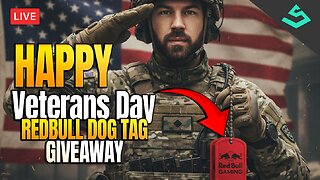Premium Only Content

Point Guard Paradox: From Floor General to Stat Hunter
#PointGuard #NBA #HoopsIQ #Playmaker #BallMovement #TeamFirst #Analytics #StatHunting
The primary job of an NBA point guard is to orchestrate the offense—think of them as the team’s conductor, setting tempo, finding open teammates, and ensuring every piece of the play hits the right note.
They’re supposed to read the defense like a book: when to push the pace in transition, when to settle into a half-court set, and when to pull the trigger on a back-door cut or kick-out three.
In theory, they’re the ultimate decision-maker—directing traffic, minimizing turnovers, and creating high-quality looks for scorers.
But modern NBA point guards often chase their own stats. They’re paid to score in an era where buckets earn headlines and millions, so facilitation sometimes takes a back seat.
Analytics favor “high usage” guards who can slash, shoot, and rack up assists by self-creation—so coaches tweak offenses around isolation plays more than crisp ball movement.
Then there’s the superstar factor: if your best player needs 30 shots to feel comfortable, your point guard becomes the set-up man by default, even if that wasn’t the plan.
Add media pressure and “hero ball” narratives, and you’ve got point guards feeling obliged to take over late-game situations rather than distribute.
The result? Clock-wasting dribbling, forced drives into traffic, and stagnant possessions when a simple pass to a wide-open teammate would do.
Reclaiming the traditional point guard role means resisting the lure of individual numbers—pushing the pace, trusting teammates, and making selfless plays might just be the formula for real championships.
-
 LIVE
LIVE
SpartakusLIVE
4 hours agoWZ Solos to Start || NEW Battlefield 6 - REDSEC Update Later
279 watching -
 1:01:56
1:01:56
ThisIsDeLaCruz
13 hours agoInside Kenny Chesney’s Sphere Part 1: Exclusive Backstage Pass
1.39K -
 LIVE
LIVE
DLDAfterDark
2 hours agoA Complete Look Into The Glock "V Series"! Pistol In Hand! VERY GAY!!
64 watching -
 7:42
7:42
China Uncensored
9 hours agoIndia Has Surpassed China
9526 -
 8:47
8:47
Hollywood Exposed
7 hours agoJoe Rogan and Zachary Levi DESTROY Gavin Newsom’s Lies About California
671 -
 LIVE
LIVE
BlackDiamondGunsandGear
1 hour agoInside NEW Glock V Models / Whats Next? / You giving up Glock?
57 watching -
 2:05:31
2:05:31
Glenn Greenwald
6 hours ago"Former" Al-Qaeda Leader Welcomed to the White House; The "New TikTok" Clamps Down on Israel Critics: With Influencer Guy Christensen; Dave Portnoy Decries Cancel Culture, Unless His Group is Under Attack | SYSTEM UPDATE #545
112K44 -
 LIVE
LIVE
Spartan
6 hours agoNine Sols
26 watching -
 LIVE
LIVE
SOLTEKGG
1 hour ago🔴 HUGE UPDATE - Veterans Day | Redbull x Dogtag Giveaway
72 watching -
 LIVE
LIVE
Flyover Conservatives
11 hours agoTough Love for Trump: What Must Change Now to Win Back America - Dennis Michael Lynch | FOC Show
378 watching